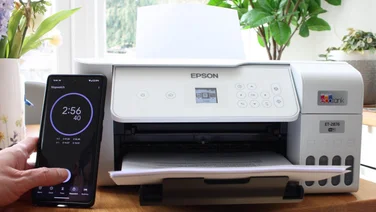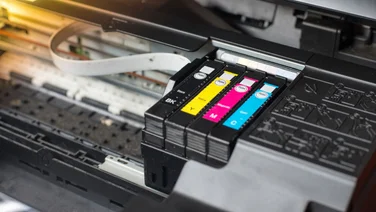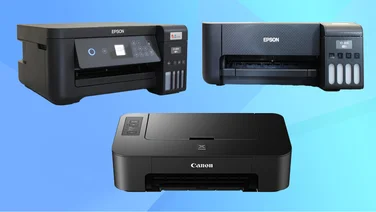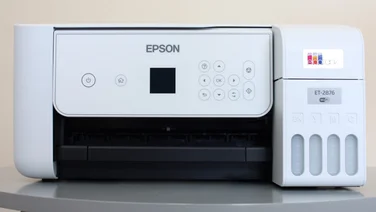To help us provide you with free impartial advice, we may earn a commission if you buy through links on our site. Learn more














- Superb image quality
- Pro level controls and build
- SD and XQD memory card slots
- One of the larger mirrorless cameras on the market
- Weak battery life
- More expensive than similar cameras
HUGE post-Black Friday deal: £900 off the Panasonic Lumix S1R Body
Wex is offering you a massive £500 off the Panasonic Lumix S1R Body. Normally retailing at £3,399, you can now purchase it for £2,899. Better still, you can claim up to £400 cashback, bringing the total saving to an astonishing £900. What are you waiting for?
£28992499
Wex
If 2019 is the year you’re thinking of moving from a DSLR to a mirrorless camera, you couldn’t have timed it better. So far, this year we’ve reviewed everything from the svelte and affordable Canon EOS RP to the medium-format Fujifilm GFX 50R, from the video-mad Fujifilm X-T3 to the pro-minded Nikon Z7. The high-end mirrorless market has never been more vibrant, and even established leader Sony must be looking over its shoulder at the crop of contenders coming for its crown.
Now it’s Panasonic’s turn. It’s been in the mirrorless melee for years, but previously only with cameras built around Four Thirds sensors – relatively small light-gathering units that allowed for impressive focal length multipliers but reduced image quality in terms of both dynamic range and high ISO performance.
Panasonic has skipped APS-C sensors entirely and is launching itself into the professional fray with its Lumix S range – high-end, high-performance mirrorless cameras with the same size full-frame sensors as in Nikon’s Z and Canon’s EOS R cameras, as well as in Sony’s high-end cameras. The S1R has a 47.3-megapixel sensor, a tough-feeling magnesium alloy body and twin memory card slots – the specs scream “pro”. But can Panasonic’s late-to-the-party full-framer dislodge Canon, Nikon and Sony’s cameras from the bags of pros?
READ NEXT: Canon EOS 6D Mark II review
Panasonic Lumix S1R review: Price and competition














This section takes longer and longer to write with each camera we see. The Lumix S1R costs £3,399 body-only, or £4,199 with the 24-105mm f/4 lens that came with our review model.
The obvious comparison is with Panasonic’s simultaneously-released S1 (£2,199 body-only). The principle difference between the cameras is resolution: while the S1R has a sensor with a whopping 47.3 megapixels, the S1 has roughly half that at 24.2 megapixels. Presumably due to those more widely spaced pixel sites, the S1 can shoot up to ISO 204,800 to the S1R’s 51,200.
Unsurprisingly, there’s a difference in the buffer size of each camera: the S1 can shoot over 90 frames in raw or a limitless number of JPEGs – the S1R will run out of buffer at a little over 40 images in raw or 50 in JPEG. The S1 also allows video makers to shoot H.265 in 4K. The cameras are otherwise the same, including their viewfinders, controls and autofocus systems.
Beyond Panasonic, options at the very high end of the mirrorless market are myriad. Sony’s top-end mirrorless camera, the A9, sells for exactly the same amount as the S1R body-only. It’s faster, at 20fps in raw – including continuous autofocus – but has a lower resolution, 24.2 megapixel sensor.
Alternatively, the Nikon Z7 is a touch more affordable at £3,199 body-only. Like the S1R it’s a high-resolution monster, with a 45.7-megapixel sensor with a similarly capable 9fps continuous mode. Unlike the S1R, it can shoot log video and has compatibility with a huge range of lenses – as does Canon’s £2,349 EOS R.
Panasonic Lumix S1R review: Features and design














Speaking of lenses, we’re used to next-generation mirrorless cameras having a relative small amount of glass available when they’re launched. That’s certainly true of Nikon’s Z-mount and Canon’s RF-mount lenses – although, in both cases, adapters allowing backwards compatibility with F-mount and EF-mount lenses means users are spoiled for choice anyway.
The Panasonic avoids the problem of “posh camera, no glass” by opting for an L-mount. Not to be confused with Canon’s professional L-series lenses, the L-mount is a partnership between Sigma, Panasonic and Leica that already has a good number of Sigma’s excellent Art lenses announced, covering everything from the terrific 14mm f/1.8 to a 135mm f/1.8. Panasonic’s own L-mount lenses include a 50mm f/1.4 and a 70-200mm f/4. Between them, Leica, Panasonic and Sigma claim there will be over 40 L-mount lenses available by the end of 2020.














However, before you get to the lens options on the S1R, you’ll have to take it out of its box, and when you do, you’ll notice it’s absolutely enormous. At 148mm wide, 110mm tall and 97mm deep, it’s only a fraction narrower and shorter than the Canon 5D Mark IV – and it’s actually slightly deeper than the Canon. Given that one of mirrorless’s chief marketing pushes is the small size of its cameras, this is surprising and a touch unwelcome. Pick the camera up and things actually get a little worse: at a shade over 1kg, it’s actually heavier by quite a bit than the Canon 5D Mark IV and the Nikon D750.
Heft it over your shoulder and you’ll find that all that real estate has been put to good use, though, because the S1R is absolutely strewn with buttons. White balance, ISO and exposure compensation all occupy the space behind the shutter release, and there’s a large LCD screen on top displaying shooting information. Exposure mode and drive mode both get dedicated dials on the other side of the viewfinder.
Befitting its place as a camera for pros, virtually every button – even the ones with their functions etched into them – can be assigned to do something else, allowing you to set up the S1R exactly as you like. The buttons are big, bold and easy to press, while no fewer than three jog dials (one in front of the shutter release, one behind and a thumbwheel on the back) further bolster the S1R’s usability.














Pop open the memory card door and another welcome feature awaits: a pair of memory card slots. In this case, one SD and one XQD slot allow photographers to mix and match current and next-generation cards. There’s lots of flexibility in how the twin slots are used: a straight overflow or simultaneous mirroring are the basic options, but you might also opt to record JPEGs to one card and raw files to another, or stills to one and video to another.
To continue with the upsides, the S1R has a fantastic electronic viewfinder. Its 5,760,000 pixels produce an outstandingly high resolution and, in use, it proved bright, clear and capable of keeping up with fast-moving subjects. Those coming to the world of EVFs from the optical viewfinders of traditional SLRs will be spoiled by this one. The preview screen on the rear is another peach. It’s touchscreen and vari-angle, of course, and is held in place by a sliding locking mechanism, which prevents it folding out in the chaos of a camera bag.
All those upsides inevitably bring us to the S1R’s downsides. Assuming you’ve pushed past the price, the S1R has admirably few, but we have to mention battery life. The CIPA rating for the S1R’s 3,050mAh battery is a paltry 380 images, but in an afternoon’s shooting we managed the arguably impressive feat of running out of juice almost 30 frames earlier, with the camera expiring after still image 351. It was a tough test – the camera was left running all afternoon in the pursuit of a news story, but it seems fair to expect any pro camera to offer at least a day’s intensive use. Suffice to say, the battery grip (£300), which allows you to mount two batteries at once, is a must-have for travel photographers.
Panasonic Lumix S1R review: Photo quality














In use, the S1R is great and, despite its sky-high resolution, there’s plenty of processing punch to make sure photographers aren’t kept waiting. In its high-speed mode, it can shoot up to 9fps, assuming you’re happy to lock autofocus on the first frame. If you want to track your subject, the S1R can shoot up to 6fps in AF-C mode. Autofocus is fast and reliable, and when paired with Panasonic’s 24-104mm f/4 lens, we were never left wanting for a quality result.
Straightforward image quality is… straightforward. We’d expect nothing less than sharp, colourful images from a camera and lens combo that costs this much and the S1R delivered magnificently. The 24-105mm f/4 handles really nicely and, once focused, delivered extremely sharp images. Even shot wide open we were rewarded with gorgeously sharp shots completely free of chromatic aberration. Whatever genre of photography you shoot – from still life studio setups to faster-paced subjects – get the S1R set up right and it will reward you with huge, sharp images that can be printed virtually any size you like.














It’s equally tasty once the light starts to fade. There was no meaningful distinction to be made between images shot at ISOs 100 to 1600, and even at that high-end noise was only just beginning to creep in. Keep pushing and ISO 3200 started to see a little well-controlled grain coming in, but we were happy to push two entire more stops to ISO 12800 before images really began to suffer. Low-light photographers – particularly those with an aversion to tripods – should consider the S1R because, despite its high-resolution sensor, it really can turn out sensationally clean low-light images.
There are a few neat tricks up the S1R’s sleeve, too. It can shoot high resolution images, automatically blending together images to produce a 187-megapixel giant. The image produced can be a raw or JPEG, with concomitant effects on both in-camera processing time and storage requirements. We timed the S1R at 23 seconds between pressing the shutter button and the camera becoming usable again, and the file produced was a whopping 347.8MB. Still, the result – a still life in a studio rather than anything more dynamic – was seamless, making the S1R a possibility for studio photographers with the occasional demand for really big prints.
Panasonic Lumix S1R review: Video quality














Of the two Panasonic Lumix S cameras, the S1R is slightly the worse when it comes to video options, but that’s pretty relative. It might not do HEVC recording, but it still shoots 4K at up to 60fps, or Full HD at up to 180fps. Twin headphone and mic sockets are unsurprising inclusions, and video quality in general lived up to the high standards set by the S1R’s stills output.
This is primarily a stills camera, though, and those looking for a full-frame, high-end video camera would do well to consider the S1 instead, which not only shoots HEVC footage but will also benefit from a firmware update this summer that will add 10-bit internal recording as well as V-log mode. It’s also over a grand cheaper…
Panasonic Lumix S1R review: Verdict
What a piece of kit. Panasonic might be new to the full-frame market, but with a debut like the S1R, it’s safe to say we’ve got a real contender on our hands. It has pro-level controls and build, and produces superb images. We’re optimistic about the future of the L-mount, and the kit lens that came with our review camera is certainly good enough to take the fight to Nikon and Canon’s pro lenses.
It’s imperfect, though: while still life photographers might love it, anyone expecting to be away from the mains for more than a day will need a spare battery at the very least – and that’s before you even consider its shoulder-bending weight.
There’s competition, too. This is quite a bit more expensive than the comparable Canon 5D Mark IV or Sony A7R III, and the same price as the top-end Sony A9, which might have lower resolution but offers significantly faster continuous performance. With all that competition, and a new, arguably untested lens mount, photographers might be forgiven for concluding that the S1R, while deeply appealing and top-quality, struggles to stand out in a market awash with high-end cameras, mirrorless or otherwise.
From a single photographer perspective, the S1R is deeply satisfying, though, and from a wider angle, any high-end camera that pushes the big three camera makers onwards can only be a good thing.






